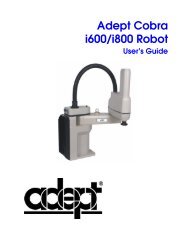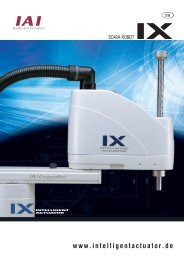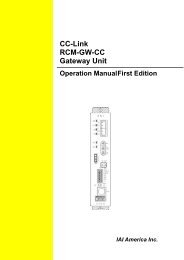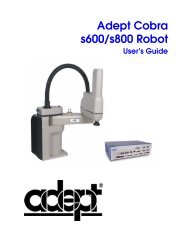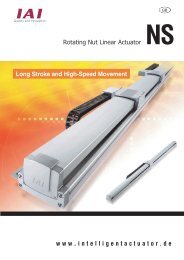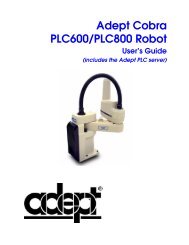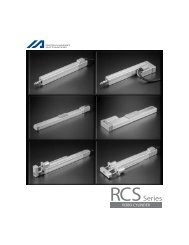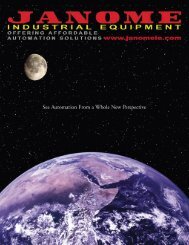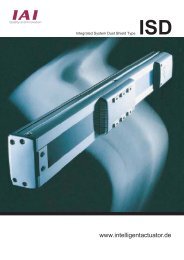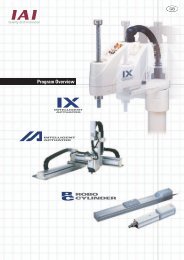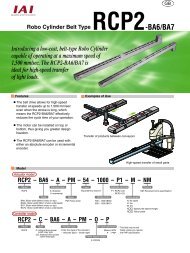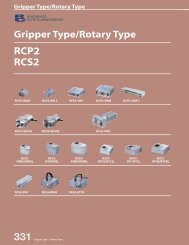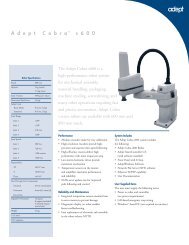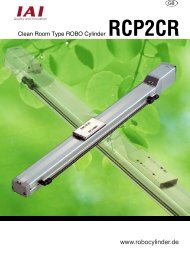Controller
Controller
Controller
Create successful ePaper yourself
Turn your PDF publications into a flip-book with our unique Google optimized e-Paper software.
Model Selection Information (Push Force)<br />
Selection Guide Correlation (Diagrams of Push Force and Current-Limiting Value)<br />
RCP2 Series<br />
High-Thrust Rod Type<br />
The push force applied in push-motion operation can be changed<br />
freely by changing the current-limiting value in the controller.<br />
Since the maximum push force varies from one model to another,<br />
use the diagrams below to check the required push force and select<br />
a type that satisfies the force requirement.<br />
Caution for Use<br />
The relationships of push force and current-limiting<br />
value represent reference values and may differ slightly<br />
from actual values.<br />
If the current-limiting value is less than 20%, the push<br />
force may fluctuate. Keep the current-limiting value to<br />
20% or above.<br />
RA10C type<br />
7000<br />
6000<br />
Push force (N)<br />
5000<br />
4000<br />
3000<br />
2000<br />
1000<br />
RA10C-2.5<br />
RA10C-5<br />
RA10C-10<br />
0<br />
0 20 40 60 80<br />
Current-limiting value (%)<br />
Note<br />
Use the table below as a guide when determining the maximum push count when the type having each lead is operated at the<br />
maximum push force for a push-motion travel distance of 1 mm.<br />
Lead (type)<br />
Push count<br />
2.5<br />
1.4 million<br />
times<br />
5<br />
25 million<br />
times<br />
10<br />
157.6 million<br />
times<br />
* The maximum push count varies depending on the operating<br />
conditions such as shock and vibration. The figures shown to<br />
the left assume absence of shock or vibration.<br />
409 Technical Reference/Information



